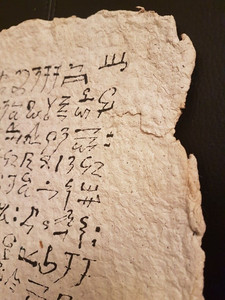Calligraphy is an ancient art form that involves the creation of beautiful and ornate writing. The practice of calligraphy has been used in various cultures throughout history, and it has had a significant cultural and artistic significance. In this article, we will explore the history and cultural significance of calligraphy.
The Origins of Calligraphy The origins of calligraphy can be traced back to ancient civilizations such as Egypt, China, and Greece. In these cultures, calligraphy was used for religious texts, official documents, and art. Calligraphy was often considered a highly respected skill, and calligraphers were held in high esteem.
Cultural Significance Calligraphy has played a significant role in various cultures throughout history. In China, calligraphy is considered one of the highest forms of art, and it is deeply rooted in the country's cultural heritage. The Chinese view calligraphy as a means of expressing one's inner self and achieving inner peace.

In Japan, calligraphy is known as shodo, which means "the way of writing." Calligraphy is highly respected in Japan, and it is considered a form of meditation. Japanese calligraphy is characterized by its simplicity and elegance, with each brushstroke being carefully planned and executed.

In the Islam, calligraphy is an essential part of Islamic art and is often used to decorate mosques and religious texts. Islamic calligraphy is highly stylized and is characterized by intricate geometric patterns and designs.
In the Western world, calligraphy was used extensively during the Middle Ages, and it played a significant role in the creation of illuminated manuscripts. Calligraphy was also used for official documents and legal records.
Conclusion Calligraphy is an ancient art form that has had a significant cultural and artistic significance throughout history. It has been used in various cultures to create beautiful and ornate writing, and it has played an essential role in religious texts, art, and official documents. Today, calligraphy continues to be practiced and admired worldwide, with artists using new techniques and materials to create beautiful and meaningful works of art.





Comments